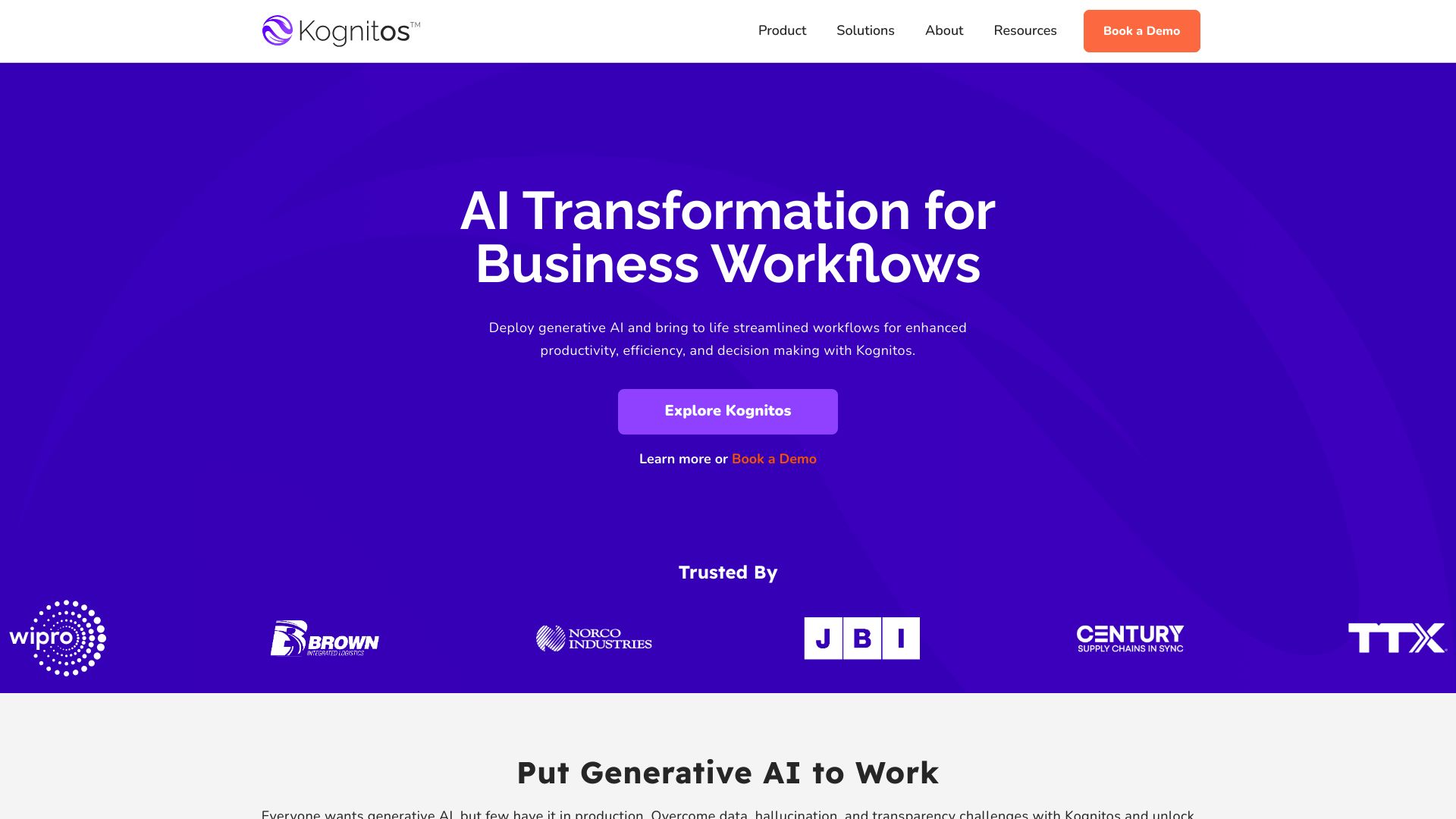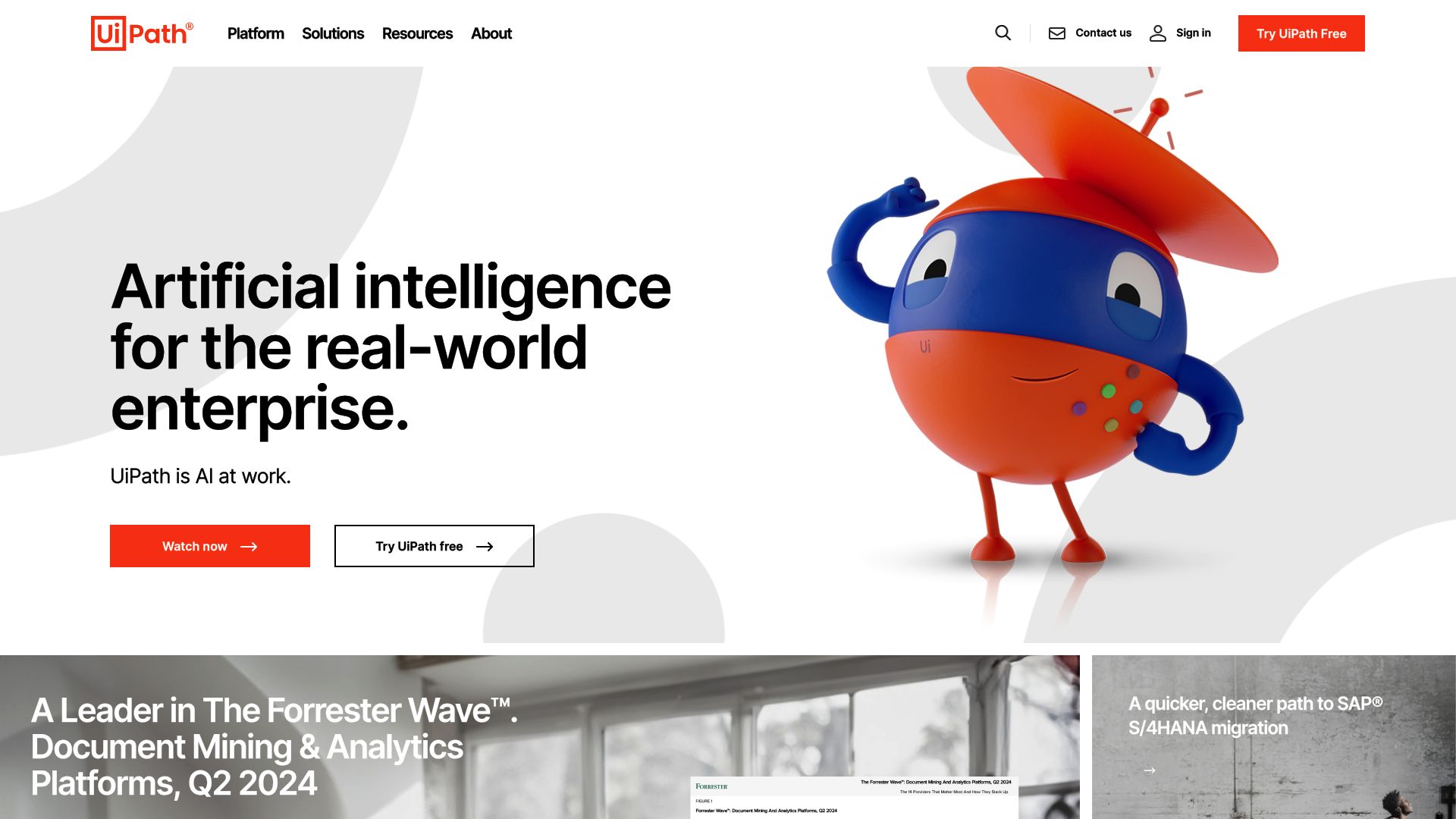Kognitos vs. UiPath: AI Automation Platforms Compared
AI-powered automation reshapes business operations, offering unprecedented efficiency and innovation. This comparison explores Kognitos vs. UiPath, and SmythOS, three leading platforms revolutionizing enterprise automation. Kognitos leverages natural language processing for intuitive, code-free automation. UiPath provides comprehensive, enterprise-grade solutions with visual development tools.
SmythOS emerges as a versatile contender, combining intuitive interfaces with advanced AI capabilities. We’ll examine each platform’s strengths, limitations, and unique features to help you navigate the evolving landscape of AI-driven business solutions.
Kognitos Overview
Kognitos revolutionizes business automation through its innovative AI-powered platform. The software interprets and executes processes written in plain English, eliminating the need for traditional coding. This approach democratizes automation, making it accessible to users across various skill levels and departments.


Kognitos leverages natural language processing and large language models to create intelligent agents capable of handling complex business logic and edge cases. These AI agents operate autonomously, learning from user inputs and adapting to exceptions over time. This self-improving capability ensures that automations become more robust and efficient with continued use.
Kognitos… creates intelligent agents capable of handling complex business logic and edge cases. These AI agents operate autonomously, learning from user inputs and adapting to exceptions over time.
The platform excels in document processing, data extraction, and integration with third-party applications. It supports a wide range of file formats, including PDFs and Word documents, making it versatile for various business needs. Kognitos also provides detailed audit logs, ensuring transparency and accountability in all automated processes.
While Kognitos offers powerful automation capabilities, it lacks certain features found in some competitors. The platform does not include a visual drag-and-drop interface, which might limit its appeal to users who prefer graphical programming environments. Additionally, there’s no indication of support for multimodal interactions or collaboration between multiple AI agents, potentially constraining its applicability in certain complex scenarios.
Despite these limitations, Kognitos stands out for its ability to handle high-volume transactions and its scalability from small to large enterprises. The platform’s unique approach to automation through natural language commands positions it as a valuable tool for businesses looking to streamline their operations without extensive technical expertise.
UiPath Overview
UiPath revolutionizes enterprise automation with its comprehensive platform. The software empowers organizations to discover, build, manage, and measure automation across departments, streamlining complex workflows and boosting productivity. UiPath’s end-to-end solution covers the entire automation lifecycle, from process mining to analytics.
UiPath revolutionizes enterprise automation with its comprehensive platform … empowers organizations to discover, build, manage, and measure automation across departments, streamlining complex workflows and boosting productivity.
The platform’s core strength lies in its enterprise-grade capabilities. UiPath caters to large organizations with intricate systems and stringent governance requirements, offering scalable solutions that can handle high-volume automation tasks. The software excels in seamless integration, allowing businesses to connect workflows across disparate systems effortlessly.


UiPath’s robot orchestration feature stands out, enabling centralized management of a digital workforce that operates 24/7. This capability proves invaluable for organizations seeking to maximize efficiency and reduce manual intervention. The platform supports both attended and unattended automation, covering front-office tasks requiring human input and back-office processes that run autonomously.
UiPath’s robot orchestration feature stands out, enabling centralized management of a digital workforce that operates 24/7.
While UiPath excels in structured workflow automation, it may not be the ideal choice for users primarily seeking general conversational AI or complex problem-solving capabilities. The platform’s focus on enterprise-scale solutions might also present a steeper learning curve for smaller businesses or individual users. Despite these considerations, UiPath’s comprehensive feature set and robust integration capabilities make it a powerful tool for organizations looking to transform their operations through automation.
Feature Comparison
Kognitos and UiPath offer contrasting approaches to automation, with significant feature gaps in core components and security. Kognitos focuses on natural language processing for automation, allowing users to write processes in plain English. This approach eliminates the need for traditional coding but lacks a visual builder, potentially limiting its appeal to users who prefer graphical interfaces. UiPath, conversely, provides a comprehensive visual development environment, catering to users who prefer drag-and-drop interfaces for creating complex workflows.
In terms of security, UiPath offers robust enterprise-grade features, including advanced access controls and encryption. Kognitos, while providing basic security measures, does not explicitly mention advanced features like IP control or OAuth implementation. This gap in security components could be a critical factor for organizations with stringent data protection requirements.
Core component disparities are evident in areas such as multimodal capabilities and multi-agent collaboration. UiPath excels in orchestrating multiple robots and handling various data types, while Kognitos primarily focuses on text-based interactions. UiPath’s strength in integrating with diverse systems and its scalability for large enterprises contrasts with Kognitos’ more specialized approach to natural language automation.
Feature Comparison Table
| Kognitos | UiPath | SmythOS | |
|---|---|---|---|
| CORE FEATURES | |||
| AI Agents | ✅ | ❌ | ✅ |
| Hosted Agents (Dev, Production) | ✅ | ❌ | ✅ |
| Visual Builder | ❌ | ✅ | ✅ |
| No-Code Options | ✅ | ❌ | ✅ |
| Memory & Context | ✅ | ❌ | ✅ |
| Autonomous Agents | ✅ | ❌ | ✅ |
| Explainability & Transparency | ✅ | ❌ | ✅ |
| Multimodal | ✅ | ❌ | ✅ |
| Problem-Solving Capabilities | ✅ | ❌ | ✅ |
| Multi-Agent Collaboration | ✅ | ❌ | ✅ |
| Work as Team | ✅ | ❌ | ✅ |
| SECURITY | |||
| Constrained Alignment | ❌ | ❌ | ✅ |
| IP Control | ❌ | ✅ | ✅ |
| COMPONENTS | |||
| Foundation AIs | ✅ | ❌ | ✅ |
| Huggingface AIs | ✅ | ❌ | ✅ |
| Zapier APIs | ❌ | ❌ | ✅ |
| Classifiers | ✅ | ❌ | ✅ |
| Data Lakes | ❌ | ❌ | ✅ |
| DEPLOYMENT OPTIONS (EMBODIMENTS) | |||
| Deploy as API | ✅ | ❌ | ✅ |
| Deploy as Webhook | ❌ | ❌ | ✅ |
| Staging Domains | ✅ | ❌ | ✅ |
| Production Domains | ✅ | ❌ | ✅ |
| Deploy as Site Chat | ❌ | ❌ | ✅ |
| Deploy as Scheduled Agent | ✅ | ❌ | ✅ |
| Deploy as GPT | ❌ | ❌ | ✅ |
| DATA LAKE SUPPORT | |||
| Hosted Vector Database | ❌ | ❌ | ✅ |
| Sitemap Crawler | ❌ | ❌ | ✅ |
| YouTube Transcript Crawler | ❌ | ❌ | ✅ |
| URL Crawler | ❌ | ❌ | ✅ |
| TXT File Support | ✅ | ❌ | ✅ |
Best Alternative to Kognitos and UiPath
SmythOS emerges as the superior alternative to Kognitos and UiPath for AI-driven automation. Our platform combines the strengths of both competitors while addressing their limitations. We offer an intuitive visual builder that simplifies complex workflows, rivaling UiPath’s interface while surpassing Kognitos’ text-based approach. Our no-code options democratize AI development, making advanced automation accessible to users of all skill levels.
SmythOS emerges as the superior alternative to Kognitos and UiPath for AI-driven automation. Our platform combines the strengths of both competitors while addressing their limitations.
Unlike Kognitos and UiPath, we provide comprehensive support for autonomous agents with memory and context awareness. This enables more sophisticated, human-like interactions and problem-solving capabilities. Our multi-agent collaboration feature outperforms both competitors, allowing teams of AI agents to work together seamlessly on complex tasks.
We excel in deployment flexibility, offering options as APIs, webhooks, scheduled agents, and more. This versatility surpasses both Kognitos and UiPath, allowing for seamless integration into diverse workflows and systems. Our platform also boasts superior security features, including constrained alignment and IP control, addressing enterprise-level concerns more comprehensively than our competitors.
SmythOS stands out with our extensive component ecosystem, supporting various AI models, APIs, and data processing tools. This rich feature set, combined with our scalable architecture and intuitive interface, positions us as the ideal choice for businesses seeking powerful, flexible, and user-friendly AI automation solutions.
Conclusion
Kognitos, UiPath, and SmythOS each offer unique approaches to automation and AI integration, catering to different needs within the enterprise landscape. Kognitos shines with its natural language processing capabilities, allowing users to create automations using plain English. This approach significantly lowers the barrier to entry for non-technical users. UiPath, with its comprehensive enterprise-grade platform, excels in orchestrating complex, high-volume automations across large organizations.
However, SmythOS emerges as the superior choice, combining the best of both worlds and adding unparalleled flexibility. Our platform’s intuitive drag-and-drop interface rivals UiPath’s visual tools while maintaining the accessibility that Kognitos offers through natural language interactions. SmythOS goes further by supporting a vast array of AI models, APIs, and data sources, enabling users to create sophisticated, multi-agent systems that can handle complex, real-world scenarios.
Unlike Kognitos and UiPath, SmythOS offers true versatility in deployment options. We empower users to create AI agents once and deploy them anywhere – as APIs, chatbots, scheduled tasks, or even integrated into popular platforms like ChatGPT and Alexa. This “create once, deploy anywhere” philosophy sets SmythOS apart, offering unmatched flexibility for businesses of all sizes.
To experience the future of AI-powered automation, create a free SmythOS account today. Our platform offers unlimited agent creation with a generous free tier, allowing you to explore the full potential of AI automation without risk. For those ready to revolutionize their workflows, check out our diverse range of AI-powered agent templates to jumpstart your journey. SmythOS is more than just a tool; it’s your partner in unlocking the true potential of AI for your business.
Last updated:
Disclaimer: The information presented in this article is for general informational purposes only and is provided as is. While we strive to keep the content up-to-date and accurate, we make no representations or warranties of any kind, express or implied, about the completeness, accuracy, reliability, suitability, or availability of the information contained in this article.
Any reliance you place on such information is strictly at your own risk. We reserve the right to make additions, deletions, or modifications to the contents of this article at any time without prior notice.
In no event will we be liable for any loss or damage including without limitation, indirect or consequential loss or damage, or any loss or damage whatsoever arising from loss of data, profits, or any other loss not specified herein arising out of, or in connection with, the use of this article.
Despite our best efforts, this article may contain oversights, errors, or omissions. If you notice any inaccuracies or have concerns about the content, please report them through our content feedback form. Your input helps us maintain the quality and reliability of our information.
